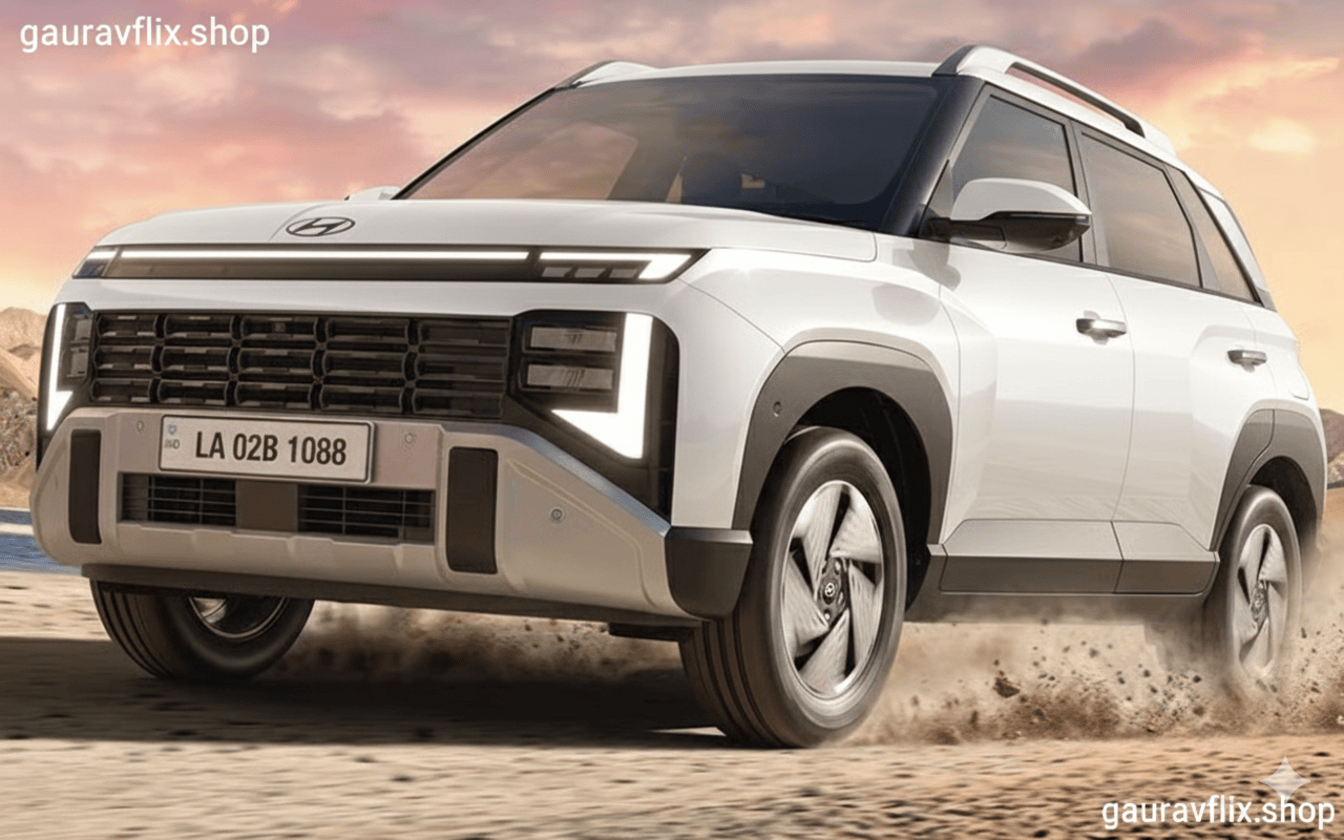Hyundai Venue launch — full guide to price, mileage, features and what buyers should know
The Hyundai Venue launch for the 2025 new-generation model brings a major mid-cycle update to the compact SUV that has been one of India’s top-selling small SUVs. This piece walks through everything the prospective buyer, car-enthusiast, or fleet manager needs to know: official prices and variant list, ARAI and expected real-world mileage, engines and transmissions, detailed feature and safety analysis, costs of ownership, and practical buying scenarios. The facts below are drawn from Hyundai’s official release and contemporary reporting from leading automotive outlets.
What happened: the new Hyundai Venue launch in brief
Hyundai Motor India unveiled the all-new / refreshed Venue for the 2025 model year with a comprehensive design and technology upgrade. The company introduced a technology-led interior, Level-2 Hyunda i SmartSense ADAS suite, and a broader engine range while positioning the car competitively in price. The base ex-showroom price was announced at approximately ₹7.89–7.90 lakh depending on the reporting outlet.
This launch is notable because Hyundai has pushed the Venue further upmarket — adding higher-end connectivity (ccNC system, large curved displays), Bose audio in top trims, and a standardization of a long list of safety features across the lineup. Production will continue locally in India and the model is slated for export to select markets.
Price and variant breakdown — what Hyundai announced
Price is the first question for most buyers, so here’s the verified variant-level information reported at launch and published by dealers and automotive portals. Reporting lists the introductory ex-showroom starting price at ₹7.89–7.90 lakh for the base variant, with the fully loaded top variant moving into the mid-₹15 lakh bracket depending on fuel, transmission, and dealer levies. Exact on-road prices will vary by state due to taxes, insurance, and optional extras.
Representative ex-showroom price ranges reported at launch (indicative):
- Base HX 5 / entry variants: ~₹7.89–9.5 lakh (ex-showroom, introductory pricing).
- Mid variants (HX6 / HX8 type): ~₹10.4–12.8 lakh depending on engine and transmission.
- Top tech-rich HX10 / Diesel AT flagship: ~₹14.5–15.6 lakh ex-showroom.
Engines, transmissions and expected performance
The new Venue keeps a multi-engine strategy to cover different buyer priorities: a naturally aspirated 1.2-litre MPi petrol, a 1.0-litre turbocharged petrol (GDi / T-GDi), and a 1.5-litre diesel. These engines are paired with a mix of transmissions — 5/6-speed manuals, DCT (for the turbo petrol), and automatic torque-converter options in some diesel variants. This preserves the Venue’s appeal to both urban commuters and those who want a little more performance or towing/long-distance capability.
Performance expectations (manufacturer-claimed / typical):
- 1.2L MPi petrol — tuned for efficiency and city drivability.
- 1.0L turbo petrol — sharper throttle response, quick DCT shifts, strong midrange torque.
- 1.5L diesel — higher torque for highway runs and long distances.
Mileage — official ARAI figures and real-world expectations
Fuel economy is a major purchasing factor. Hyundai has published ARAI/engine figures and automotive portals have collated these into a useful table. ARAI-listed mileage for Venue variants ranges roughly between ~18.3 kmpl for automatic turbo petrol configurations and up to about ~20.3+ kmpl for certain manual options; diesel variants report up to around ~20–21 kmpl on paper depending on variant and test conditions.
Expect real-world figures to be lower by ~10–20% depending on driving environment, traffic, use of air conditioning, and maintenance.
- City — petrol turbo DCT: ~11–14 kmpl; petrol MT: ~13–16 kmpl.
- Highway — petrol ~16–20+ kmpl; diesel up to ~21 kmpl.
- Average mixed-use: ~13–17 kmpl (petrol), ~16–20 kmpl (diesel).
Design, interior and the tech leap — what changed
The most visible changes are in styling and cockpit technology. Hyundai increased the Venue’s presence with sharper body lines and added premium touches like dark chrome grille elements and quad-beam LED headlamps in higher trims. Inside, the Venue received a large curved dual-screen display layout, ccNC infotainment (NVIDIA-powered) in higher trims, and a Bose 8-speaker system option in top spec cars.
- Curved dual 12.3-inch displays.
- Upgraded dashboard materials and design theme.
- Ventilated seats, wireless charging, and panoramic/smart sunroof in top trims.
Safety and driver-assist tech — Hyundai SmartSense
A major selling point in this launch is the inclusion of Hyundai SmartSense Level-2 ADAS tech in many Venue trims. The system includes up to 16 ADAS features such as Smart Cruise Control with Stop & Go, Forward Collision-Avoidance Assist, Lane Keeping Assist, Driver Attention Warning, and Parking Collision-Avoidance Assist.
Features by focus: safety, comfort, convenience
Safety-forward features
- Forward Collision-Avoidance Assist.
- Smart Cruise Control (Stop & Go).
- Parking Collision Avoidance Assist.
Comfort and convenience
- Ventilated seats and wireless Android Auto / Apple CarPlay.
- Bose 8-speaker system.
- Multiple drive modes and climate control optimization.
What it costs to own: fuel, service, insurance, resale
Beyond the purchase price, ownership costs matter. Here are approximate calculations:
- Petrol MT: 15 kmpl → ~₹10,000/month fuel (1,500 km use at ₹100/litre).
- Petrol DCT: 13 kmpl → ~₹11,500/month.
- Diesel: 18 kmpl → ~₹8,300/month (₹100/litre equivalent).
Service cost averages ₹6,000–10,000 per year; Hyundai’s network keeps service convenient.
How the Venue stacks up against rivals
- Tech & infotainment: Venue leads with curved screens and Bose system.
- Value: rivals may start cheaper but lack similar tech depth.
- Fuel efficiency: similar across brands; diesel still wins for long drives.
- After-sales: Hyundai’s nationwide reach remains strong.
Frequently asked questions (FAQ)
- Q: What is the starting price for the new Venue?
- A: Around ₹7.89–7.90 lakh ex-showroom (introductory).
- Q: Which variant suits city driving?
- A: 1.2L petrol MT or 1.0L turbo DCT for balance of comfort and economy.
- Q: Is ADAS worth it?
- A: Yes, for highway driving; it improves safety and reduces fatigue but isn’t autonomous.
- Q: What real mileage can owners expect?
- A: 13–17 kmpl petrol, 16–20 kmpl diesel under mixed driving.
- Q: How safe is it?
- A: Multiple airbags, ESC, TPMS, ADAS Level-2 features — safety is a strong focus.
Real-owner scenario: family buyer from Palwal, Haryana
Family of four, daily 25 km commute, one monthly 300 km trip — ideal variant: 1.0L turbo DCT mid trim for balance of efficiency and convenience; ~₹9,000–11,000 monthly fuel cost estimate.
Pros and cons
Pros
- Strong tech and infotainment suite.
- ADAS safety at accessible price.
- Multiple powertrain choices.
- Reliable after-sales support.
Cons
- Top trims are expensive.
- DCT can be less efficient in stop-go traffic.
- ADAS components increase repair costs.
How to test-drive the new Venue
- Test manual vs automatic (DCT/AT) back-to-back.
- Try ADAS demos safely with dealer rep.
- Check infotainment speed, connectivity, and OTA updates.
- Assess rear-seat comfort and boot usability.
- Request variant spec sheet in writing.
Financing, booking and negotiation tips
- Look for launch-time finance or exchange offers.
- Negotiate on accessories/warranty, not vehicle price.
- Review insurance premiums for ADAS-equipped variants.
Sources and verification
This article combines official Hyundai India press material, dealer price lists, and data from Times of India, Economic Times, CarDekho, and CarWale. Figures may change; verify at authorized Hyundai dealers before purchase.
Launch video and walkthrough
Watch the official launch and demo below (replace with actual Hyundai video link):
Maintaining ADAS and sensors
- Keep camera/radar areas clean.
- Recalibrate sensors after collision repair.
- Confirm ADAS coverage in insurance policy.
Environmental and regulatory notes
Diesel remains efficient for highways but may face tighter regulations in cities. Petrol variants are safer for long-term compliance; EV/hybrid options may follow in Hyundai’s roadmap.
What to watch next
- Customer mileage reports and early ownership reviews.
- Any post-launch price updates.
- Variant waiting periods and delivery timelines.
Conclusion — who should buy the Hyundai Venue?
The Hyundai Venue launch refreshes the compact SUV with advanced tech, safety, and style. City commuters, first-time SUV buyers, and tech-oriented families will find strong value. Long-distance drivers benefit from diesel’s efficiency, while urban users will prefer petrol automatic for comfort.
Key takeaways
- Price: ₹7.89–15.6 lakh (ex-showroom, India).
- Engines: 1.2L petrol, 1.0L turbo petrol, 1.5L diesel.
- ARAI mileage: 18–21 kmpl (expect slightly lower real-world).
- Level-2 ADAS, Bose audio, dual screens — tech highlights.
Next steps — making a purchase decision
- Define usage (city/highway).
- Shortlist variants and test-drive.
- Compare on-road quotes and finance options.
- Watch verified owner reviews before booking.



